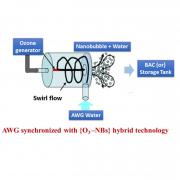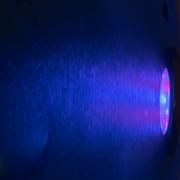Production of Crystalline Nanocellulose (CNC) and its application for water treatment membranes
Crystalline nanocellulose (CNC) is a natural, renewable polymer which is composed of rod-like nanocrystals of cellulose with average dimensions of 100 nm in length and 5 nm in diameter. CNC possesses unique optical and mechanical properties, such as high aspect ratio, low density, high tensile strength, etc. Such properties make CNC a highly useful material for the manufacturing of various bioproducts. In recent years, interest in CNC intensifies as the industry realizes its potential, especially with its production being cheap and based on extraction from plants.
There are, however, several problems that arise by the production of crystalline nanocellulose from plants, such as a waste of water and the occupation of agricultural lands. An even more environmental production of CNC might be achieved by using recycled paper sludge (RPS) instead of plants, as RPS consists mainly of wood – which is very rich in cellulose as well.
The goal of this study is to try and develop an environmental-friendly method of producing CNC from RPS, while examining two approaches:
- Chemical Hydrolysis: a hydrolysis using malic acid (di-carboxylic acid). Using such acid rather than the conventional use of phosphoric or sulfuric acid may add carboxylic groups to the cellulose, allowing higher electric charges and a better separation and recycling because it is a weak acid.
- Enzymatic Hydrolysis: incubation with enzymes may prove highly effective for crystal utilization.
The next step of the research will be manufacturing membranes that are made of CNC, which will be produced from the RPS, for various water treatments such as an adsorption of dyes from textile industry or heavy metal ions from wastewater.





